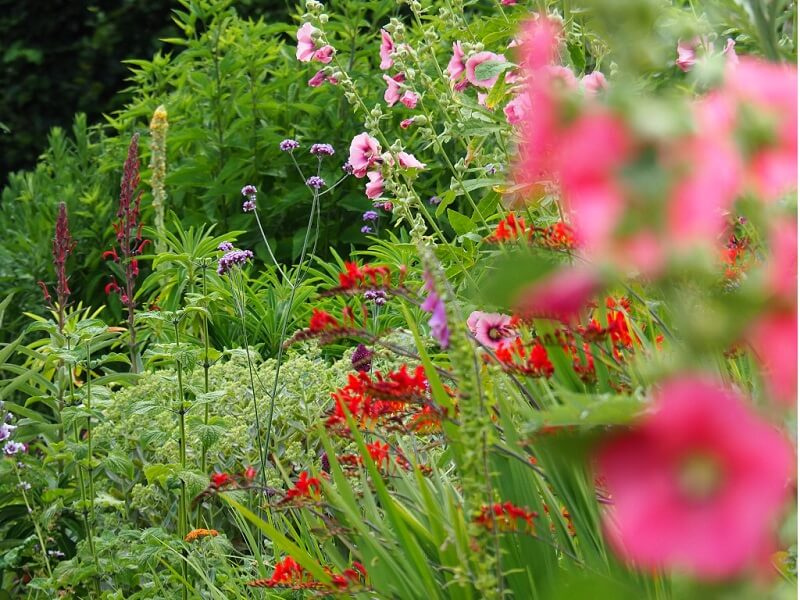Here are 3 steps for creating a cottage garden border that is low maintenance and pleasing to the eye.
If you love flowers as much as we do, even a small corner of the garden can be enough to create the feeling of a cottage garden. There are specific types of cottage perennials that will give the effect of a romantic cottage garden directly in your garden.
The secret to having a lovely cottage garden is selecting the right flowers for the right places. Perennial flowers are great for cottage gardens because they look beautiful, are hardy, and are easy to care for.
Some hardy flowers that are perfect for cottage gardens include:
- Nepeta (Catnip)
- Foxglove
- Roses
- Lady’s Mantle
- Hollyhocks
- Anemones
- Lavatera
- Geraniums
In order to provide you with a bit of help and guidance when creating your own cottage garden border, we have provided you with a short step-by-step plan below.
Step 1: Choose a Good Location for Your Border
Cultivating a flower garden demands careful thought and planning to ensure a successful growing experience.
Before settling on the exact spot for the garden, it is important to find out which type of flower thrives best in which area. Flowers prefer full sun or partial shade, so if you want to create a rich flower border, it is best to choose a spot facing south, south-east, or south-west.
Step 2: Choose Eco-friendly Cottage Plants
To get the most out of your garden all year, consider the times of year each plant blooms to help you choose the right plants for your border.
It is also helpful to draw up a colour palette to help you stick with your plan and give yourself some structure in your garden design. Consider some lovely and complementary climbing plants to adorn your cottage garden with climbers that will add extra green and colourful effects to provide a further aesthetic element to the height of your garden.
Step 3: Planting Your Cottage Plants
Before planting, make sure to sketch out where you want each plant to be in your border and mark where each plant will be positioned in your design.
First, make your structure plants and then place them on your border according to their height. Then draw your filler plants and place them around your structure plants.
Take note of the approximate size of each plant and how many will fit into a square metre (m2). Also bear in mind that you should spread your spring, summer and autumn bloomers evenly so that you can achieve an even and aesthetically pleasing border.
Extra Tips
Don’t worry about making mistakes in a cottage garden because these are gardens where you experiment a lot and are designed to be flexible.
You can always make corrections as you continue along your design path, and once you have gathered some visual inspiration or found an image that you love, you can create a palette of colours from there that resonates with you. Then you can start gathering organic or biological compost because healthy soil is essential for growing an abundance of plants.


